
|
Vol 77 |
Page 9 |
Privacy Policy | Editorial Policy | Profit Policy | Join the Association | List of Members | Contact us | Index | Links
Back Go to page: 1 2 3 4 5 6 7 8 9 10 11 12 13 14 15 16 17 18 19 20 Forward
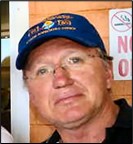
Allan George's Gems.
Contents:
Hercs reach 850,000 flying hours.
Jack Nissenthall - the VC hero who never was.
Why do cars backfire?
You hop in your car to begin your morning commute when all of a sudden, you hear what sounds like a gun firing! But hunting season is over, and you're sure it didn't come from a neighbouring yard — so what was that loud POP!? It's not a gun and it's not a firecracker. It's your car backfiring! This explosive sound is scary by itself, but it’s even more alarming when followed by a loss of vehicle power. If you’re wondering, “Why the pop is my car backfiring,” read on to learn what causes the sound and how to deal with it.
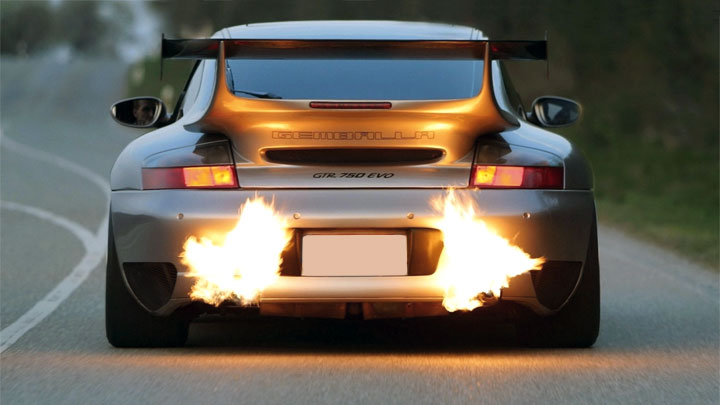
How your engine works.
Your car’s internal combustion system uses flammable liquids, air, and controlled explosions to power your vehicle. Backfires occur when this system isn’t working as it should, which is why it’s critical to understand how the engine works in order to figure out why your car is backfiring.
Here are the basic steps your internal combustion engine follows to turn fuel and air into horsepower:
Step 1: Intake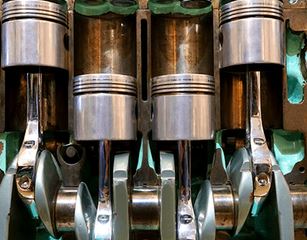
The intake valve on your cylinders opens, pulling a mixture of fuel and air into the engine.
Step 2: Compression
The intake valve shuts and a piston compresses the air-fuel mixture mentioned above.
Step 3: Combustion
When the mixture is fully compressed, a spark plug “fires” electricity into the air-fuel mixture, igniting it into a small, controlled explosion.
Step 4: Power Stroke
The gases from the air-fuel combustion push the piston back in what’s known as a “power stroke.” This reaction spins the crankshaft, which activates the gears and ultimately powers your car’s wheels.
Step 5: Exhaust and Propulsion.
The exhaust valve opens and closes, allowing smoke and residue from the combustion process to escape through the tailpipe. The entire process repeats while your engine runs, with multiple pistons and cylinders working together to make the wheels on your car go round and round.
So, why does my car backfire?
Typically, a backfire takes place when one of the above explosions occurs outside your fuel cylinders. Some backfires travel back up the intake valve while others spill out through the exhaust system — causing a type of backfire known as an “afterfire.” Afterfires can sometimes result in visible flames shooting out of the tailpipe. Backfires and afterfires are worth paying attention to since they can cause engine damage, power loss and decreased fuel efficiency. There’s a variety of factors that can cause your car to backfire, but the most common ones are having a poor air to fuel ratio, a misfiring spark plug, or good old-fashioned bad timing.
Poor fuel-air ratio.
The right ratio of fuel and air is critical to proper engine combustion. If there is too much of either one, you can have an engine that’s "running rich," or "running lean" — neither of which is a good thing. When an engine is running rich, it has too much fuel and too little air, which slows down the combustion process. When combustion doesn’t happen in a timely manner, the exhaust valve opens while the air-fuel mixture is still igniting, causing this explosion to “spill” out of the cylinder, making a loud popping noise. On the flip side, an engine that’s running lean has too much air, which also delays combustion, causing backfires. One of these could cause a faulty fuel/air mixture to occur:
A. Faulty Oxygen Sensors.
In newer vehicles, computerized sensors help ensure the air-fuel ratio is correct, however, if a sensor malfunctions, it can throw off the air-fuel ratio, causing sluggish or delayed combustion. If this is the case, your Check Engine light might be screaming at you.
B. Leaky Exhaust Systems.
Leaks in the exhaust system, sometimes called vacuum leaks, can sound more like a screech than a bang as excess air gets sucked in. All this extra air mixes with the fuel, creating an incorrect ratio for proper combustion.
C. Dirty Air Filters.
Even something as simple as a dirty air filter can potentially trigger a backfire. Since air filters allow clean air to flow into your engine, a dirty filter can inhibit the flow of air into the intake, creating a poor fuel-air ratio.
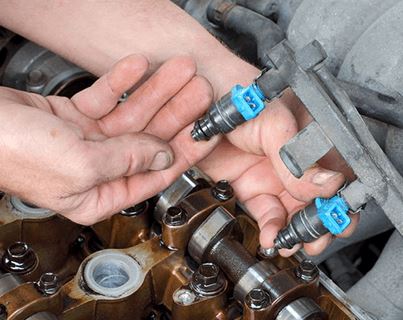
D. Faulty Fuel Injectors.
Injectors that supply too little or too much fuel to the cylinder can also create a poor fuel-air ratio.
E. Misfiring spark plugs.
Spark plugs that fire out of turn or not at all can also cause backfiring. Shorts in wiring, incorrect wiring, or damaged distributor caps that deliver the charge to the wrong plug at the wrong time are much more common in older vehicles. But even in newer cars and trucks, plugs can malfunction due to carbon buildup or wear out over time.
F Bad timing
In the four-steps of engine combustion, timing is everything. If the timing is off, valves might open or close at the wrong time and the spark might arrive early or late. Any time the fuel-air explosion is not properly compressed, ignited, and contained, a backfire can occur. "Bad" timing tends to be more of an issue in older vehicles with timing belts and catalytic converters. Newer engines with computer-controlled timing are more reliable, and backfires are less likely.
Why do cars backfire when shifting gears?
Not all backfires occur when you start the engine. Sometimes one can happen when you shift gears, however, that loud pop that you hear when shifting is, in fact, an afterfire. Most of these occur on manual vehicles where a clutch is used to shift gears. As you press in your clutch and go from one gear to the next, fuel can continue to enter the cylinders, especially if you switch gears at higher RPMs. All this unburnt fuel builds up in the exhaust and ignites when you release the clutch. Though this might sound alarming when it happens, an afterfire when shifting isn't necessarily damaging your vehicle.
Great Response.
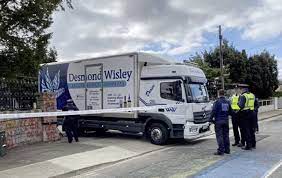
A man slammed a truck through the gates of the Russian Embassy in Dublin on Monday, the 11th April, prompting Russia to summon the Irish ambassador to Moscow and demand an apology.
It’s the latest incident highlighting how Moscow’s diplomats and outposts in the West have become targets for people protesting Russia’s invasion of Ukraine.
Over the weekend, Russia’s Foreign Ministry said in a statement that “hoodlums have attacked Russian diplomatic missions in Canada, Estonia, Iceland, Ireland, Lithuania, Poland and Sweden.” The ministry told Russian news agency RIA Novosti that a diplomat was attacked near the embassy in Vilnius, Lithuania. And protesters have reportedly thrown paint and sprayed graffiti on Russian missions in Israel, the United States and other places.
The ministry said Tuesday that it summoned Ireland’s ambassador to Russia, Brian McElduff, to discuss the truck-ramming incident in Dublin, which it called “a tactic widely used by terrorists.” It demanded an apology and compensation from Irish authorities, according to Russia’s state-owned Tass news agency.
A video of the incident in south Dublin shared by Irish broadcaster RTE News shows a large truck backing into the gates of the Russian Embassy as some onlookers cheer. Other videos posted on social media show the driver, who identifies himself as Desmond Wisley, handing out fliers with images of what he describes as victims of Russian forces in Ukraine, including a woman and two children.
Pointing to the leaflets, he said, “I’ve done it for this lady here and her kids that were killed in an apartment. … It really affected me. … It’s about time we stood up.”
Pat Kenny, the Irish Ambassador to Russia answered the Russian complaint perfectly. Listen HERE. Couldn't have said it better myself!!
Drone re-fuelling.
Very soon we'll all be able to stay home and watch machines go to war for us. Lot safer that way! See HERE.
If you can't think of a word, say, I forget the English word for that.
That way people will think you're bilingual instead of an idiot
Jack Nissenthall – the VC hero who never was.
Flight Sergeant Jack Maurice Nissenthall was a Jewish Cockney born in the East End of London on the 9th Oct 1919. He was a pupil at Malmesbury Road Primary school with his sister Marie and later at Mansford Technical School. His father Aaron was a Polish Jewish immigrant tailor from a small town near Warsaw and his mother Annie Harris-Schmidt was born in London. As a boy, Jack attended the Cambridge and Bethnal Green Jewish youth club when his family moved to Blythe Street, Bethnal Green.
Jack had been interested in radio and TV ever since childhood and had worked at EMI from 1935, taking an advanced electronics course at Regent Street Polytechnic. "From an early age I was obsessed with wireless. When still in short trousers I was making my own radio sets and repairing those belonging to my neighbours. I remember that when I did so for one old lady, she gave me half an apple as a reward. I never did discover who ate the other half... I used to spend the whole day at the National Science museum, going out to eat fish and chips and then going in again".
When working in the EMI shop in Tottenham Court Road in 1936, an RAF Officer who was known only as Ft. Lt. "Bob", came looking for apprentices. Jack was taken on to work part-time at weekends and holidays at the first radar station at Bawdsey, on the isolated Suffolk coast, with the eminent radar expert Robert Watson-Watts. He volunteered for aircrew in the RAF on the outbreak of war in 1939 but was posted instead to working in secret radar stations up and down the country because of his recognised knowledge and skills; from the early days of the war, the RAF had made many modifications to their radars at Jack's suggestion.
These ideas of his had a major effect on the ability of radar in British night fighters to knock out German bombers and his work on "Mandrel" (Airborne jammer to counter the German radar) helped destroy the U Boat offensive. He was a key player in the RAF's GCI - Ground Control Interception - work at Bolt Head in Devon. He also submitted a report on the escape of the German battle cruisers Scharnhorst and Gneisenau from Brest in 1941, which was submitted to the RAF Director of Radar. The weaknesses in the British radar defences that Jack pointed out in this report was extremely sensitive information and though acted upon, Jack's part in the corrective work was hushed-up and has never been revealed to this day.
Physically fit, unmarried (but with a steady girl, Adeline Bernard, or Dell) and an enthusiastic 22 year old, he also volunteered to give up leave and train in Scotland for the Commandos. He came from a military family, as his father and uncles Michael, Max and Lew had all fought and been wounded in the First World War. Little surprise, therefore, that he was selected and asked to volunteer to be the radar expert to take part in the tragic but magnificent raid on Dieppe in occupied France, on the 19th August 1942 - operation Jubilee.
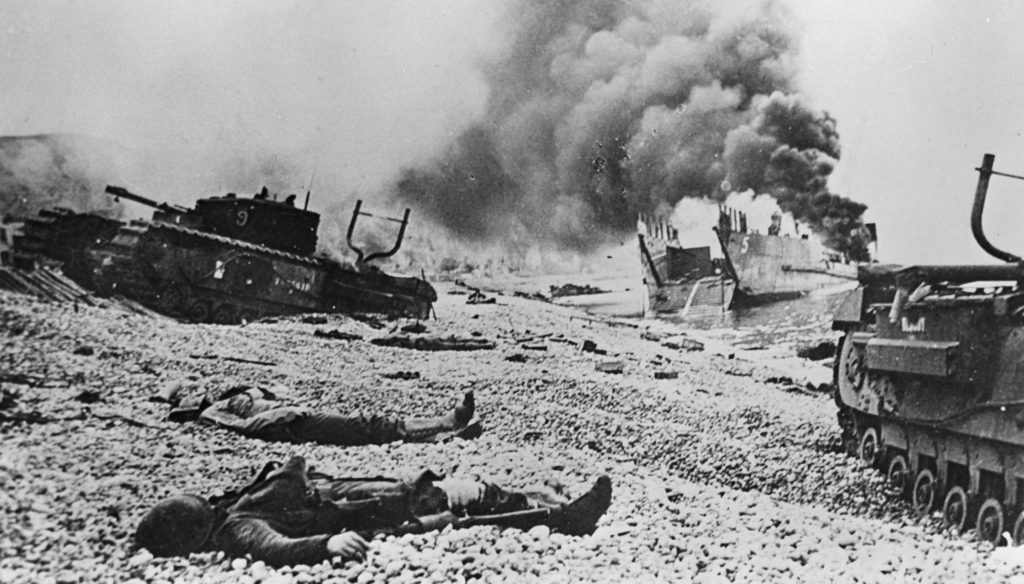
Interviewed by Air Commodore Victor Tait (RAF Director of Signals and Radar) in Whitehall, Jack was told why he had been selected, but warned that as he knew so much, he would be assigned eleven soldier bodyguards on the raid who had strict instructions that Jack must not be allowed to fall alive into enemy hands. This was clearly stated in "The Dieppe Raid Combined Report, Task 6", now kept at the Public Record office (Jack discovered after the war that this was in fact a breach of the Geneva Convention). Being Jewish was an added risk and he was told to go and think it over till the next day. Jack returned and told Tait he would go.
His second interview was with the Senior Intelligence Officer at Combined Operations, Wing Commander The Maquis de Casa Maury, a patronising and distant man and a completely contrasting experience. He warned Jack of the risks and said, "Nissenthall" - accentuating the un-English sound of his surname - "why should a Jew volunteer for such a dangerous operation?" - adding quickly - "You will get nothing out of this you know!" Immediately Jack replied, "We're not given to expect something out of everything we do, sir." Clearly Maury's remark was a poorly disguised piece of racism (he was a close associate of Oswald Moseley, the British Fascist leader interred during the war), though he offered the excuse, "I wanted to find out if you'd break under the pressure." He added that Jack must accept the condition of permanent silence on the death order if he returned; "After 25 years, nobody will believe you anyway," he added.
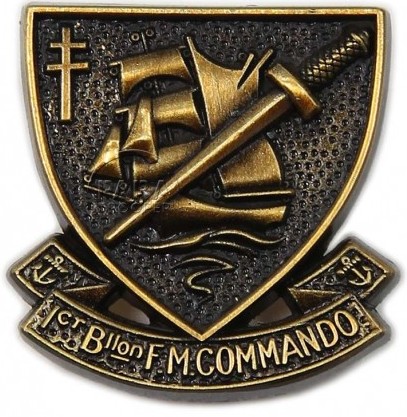
Jack was to be attached to A Company which was based on the Isle of Wight training for the raid, although they had no part in the planning of the operation. The Canadians were to form the bulk of the 6,000 man raiding force. Their commanders were straining at the leash to have their men tried out, however the raid had 16 different objectives on 5 different beach sites along a sixteen kilometre front and British No 3 and No 4 Commandos, with elements of No 3 "Jewish" Troop and other Troops of the 10th Inter-Allied Commando, a Royal Marine Commando and 50 American Rangers would also be involved, as well as the Navy providing bombardment and transport and the RAF fighter cover. Embarkation would also take place from Newhaven (the main point of departure), Shoreham and Littlehampton, as well as the Solent ports.
Put simply, the raid was designed to fulfil three objectives –
-
To be an essential learning source about the problems of launching a surprise seaborne invasion of France in preparation for D-Day, especially with regard to amphibious Combined Operations landings at an enemy port.
-
To show the Germans that their defences could be breached and so force them to divert resources from the Russian front and so create Stalin's desired "Second Front" in Europe.
-
To provide the Allies and Nazi occupied nations with a victory and hope of liberation during the darkest days of the War, when both Germans and Japanese were advancing everywhere.
Dieppe was chosen as it was believed not to be as heavily defended as larger ports such as Cherbourg (this was based on false intelligence, it turned out), was within easy reach of British fighter cover and had worthwhile targets, such as the radar station, coastal cannon batteries, railways, petrol dumps and an airfield. Objective 13 was for the SSR to escort a radar expert to the Freya 28 radar station on a cliff top at Pourville, designated as Green Beach just 4 kms west of Dieppe, and within a few minutes uncover its secrets; the expert was Jack Nissenthall.
Before leaving his last base at Hope Cove in South Devon, to take part on his mission, Jack prepared his blue RAF small pack with his most precious possession, a small avometer given to him by his late father for his Barmitzvah. In his last two letters to his mother and Adeline, he included the Jewish prayer made before embarking on a journey, "O Lord deliver us from our enemies… send a blessing upon the work of our hands."
In London, he reported to RAF Intelligence in Whitehall. He refused to remove his Jewish RAF identity discs; he wished to live and die with the sign of his people. He did not relate to the officer the anti-Semitic jibe he had heard from another Intelligence Officer on his first visit, or his firm belief that having a crack at the Nazis would be a way of getting back at them for the murder of his Jewish relatives in Poland.
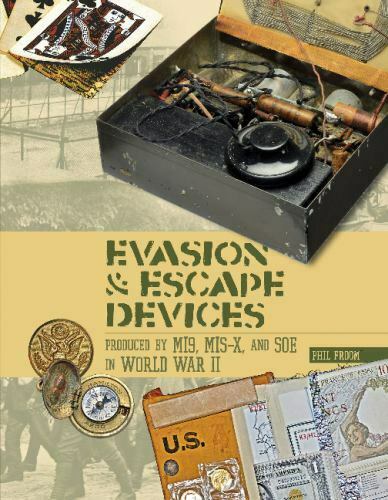
He was then given an Army uniform and an Evaders Pack, which was a small tin containing useful items to help make an escape if things went wrong. But this one included an extra item especially for Jack - a green suicide pill. He was then driven by an anonymous, armed SOE officer (wearing no badges or rank) to Waterloo and taken by train and ferry to the Isle of Wight and thence to Norris castle, to meet Colonel Merritt, OC of the SSR. Not allowed to give his full name, the Colonel addressed him as Jack.
The next day, Jack met his eleven "bodyguards". In James Leasor's definitive book on Jack, "Green Beach" (Heinemann, 1975), the men are named as members of "A" Company and were known only by nick-names. They in turn called him "Spook" because of his pale complexion gained from too many nights of work over radar screens. The following day, Jack boarded the SS Invicta, which together with the SS Princess Beatrix was to carry him and the SSR to battle. The men thought it was a practice until the tannoy announced that they were sailing through the night and would land at dawn in France. Jack describes how there was silence for a moment and then the Canadians began to cheer and the deck trembled with the sound of men stamping their boots in delight at the prospect of action. Then Canada's General Roberts (commanding the landing) and Lord Mountbatten (Chief of Combined Operations) addressed the men on both ships in turn and General Eisenhower visited the 50 American Rangers who would be the first US troops (under Captain Roy Murray) to face German soldiers in this war. Next day (July 7th) the raid (until then known as "Operation Rutter") was cancelled because of poor weather.
As pressure rose from the Russians to create a "Second Front", however, the raid had to be re-mounted. "Operation Jubilee", as it was now known, was set for August 19th. Jack was recalled to London from Devon but in his haste, put on a blue RAF shirt under his khaki Army battledress. Further, he had still his blue RAF pack, which stood out against his Army khaki and no Divisional signs on his uniform, which made him look even more out of place. In the event of capture, this would make him suspect as something more than a member of a raiding party. At a second talk with Maury, he was again offered the chance to withdraw, but refused. On arrival at Combined Operations HQ at 1a, Richmond Terrace, London, he was handed a tin helmet and revolver and briefed as before and then driven to King George V dock at Southampton by another SOE officer.
The same ships and men then set sail for Dieppe.
When he reached the SS Invicta, the Canadian troops were making a tremendous din banging their tin helmets on the metal deck. The sight of a staff car with Jack in it brought the noise to a great crescendo, for "A" Company knew that Jack's presence meant the raid was on; a huge cheer went up as went aboard. On the journey across, Frenchie - one of his escort - blessed Jack with his rosary. When Jack said he was Jewish, Frenchie said, "it was the same God and he was on our side".
Twelve miles out in the dawn half light with a chill wind, the men were transferred to the Landing Craft (LC's). At one point a Navy NCO tried to tell Jack he was in the wrong LC with his escort. A fierce argument ensued but Jack stayed put. They were still two hours journey to the beaches. Warned by the unlucky chance meeting by the invasion flotilla section of No. 3 Commando with a German navy patrol and two "E" boats from Boulogne, the Nazis around Dieppe were waiting for the Allied troops, however, the Germans were expecting an invasion along the Channel coast in any case as they were perfectly aware of the Russian pressure on the Allies and which tidal periods would be most suitable.
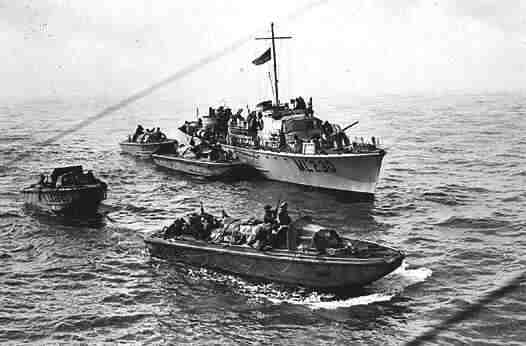
In Jack's LC a canteen of rum appeared and was passed from man to man; then suddenly they hit land. As the SSR and Canadian Highlanders came ashore at Green Beach in Pourville between 4.50 and 5.30 am, there was chaos, added to which Jack realised that they had been landed at least a quarter of a mile too far west of the radar station (code named "Study"), which was his particular target. This meant that he had to fight his way across the bridge first before getting to his targets.
With Canadian casualties mounting horrifically in bitter close fighting, Jack and his team raced up the beach and along the road east towards the bridge over the river Scie, to get to the cliff-top radar. The bridge was raked with fire and by then covered with Canadian dead, but encouraged and led by the remarkable Col. Merritt, who won his VC here as he exposed himself constantly and fearlessly to enemy fire, the men rushed the bridge and found cover on the other side.
Three of Jack's escort by this time were already killed and one wounded, as well as the CO, but the group and others had reached the slope approaching the radar and began the ascent, surrounded by wounded and dead Canadians. It was now morning and getting warm. "A" Company's 100 men were already down to 25.
(A few weeks before his death in 1997, Jack saw a documentary on TV which alleged that many of A company hid in some houses near the beach and because they did not press home their attack, he was unable to break into the Radar Station. He wrote a bitter letter to Col Merritt about this, but no reply came back).
From the roadside viewing point (there to this day) Jack was now only 100 yards away from his objective and could now see the radar station clearly, surrounded by open, short grassland and masses of barbed wire, sandbags and trenches. But the German firepower was too great and the site too impregnable for an attack and so Jack volunteered to take a narrow path a mile back again, with Frenchie and Thrussel, to the invasion HQ which was in the cassino near the beach, to try and get a radio message out, for a destroyer to shell the radar area and extra men to rush the radar defences. Try as they might, they could not find one working radio among the fighting troops!
Blown off their feet by a mortar bomb on the return run, they somehow eventually made it back yet again up to the wounded Osten near the radar (minus Thrussel), where Jack decided smoke cannisters were needed to allow them to break in. He and Smokey rushed again down to the town and at the bridge met an exhausted Col. Merritt still rallying his men across the Scie. The CO gave Jack some reinforcements and they returned again to the hill, losing many on the way through intense German sniper and mortar fire.
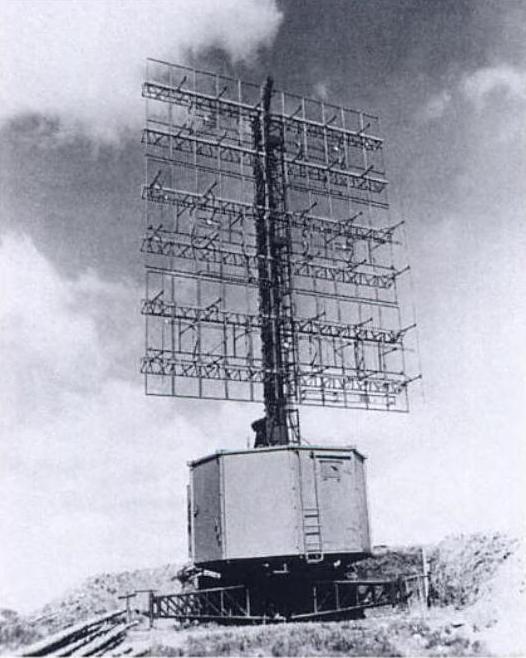
By now, the mission appeared hopeless so Jack decided he would go around the rear of the station and obtain the secrets of the radar alone. He knew British listening centres on the South coast had often picked up coded messages being sent between the German radars by radio and morse. Cryptographers in Britain then decoded these messages and thus were able to determine the capabilities and strengths of the radar stations. However, now the stations used land line telephones which could not be intercepted. If Jack could cut these lines and force the use of radio again, then the German transmissions could again be picked up in Britain, and the latest secrets revealed, including the possible whereabouts of other yet unknown German radars.
He told Osten to give him covering fire explaining that whatever risk he took, either the Germans or Canadians would get him. He took two grenades from a dead Canadian (he related how he was determined to blow himself up if in danger of capture), his own tool pack and pistol and rushed the rear wire, getting under it. He still had 50 yards to go and so far was not spotted. He crawled closer over very rough, hard ground and at last saw the wires he was after, leading out of the rear of the station via a short mast on the sloping hill and thence disappearing underground. With his wire cutters (and a spare set in his pocket), he dropped his pack - with the precious avometer given him by his father many years before - and climbed the mast, slowly cutting all eight cables as bullets flew about him - both Canadian and German! By the eighth cable he was suspended 15 feet by one hand and as he snipped it, he fell to earth, rolling away down the slope towards the Canadian positions. He had done it!
At that moment, by a twist of irony, in a camouflaged caravan listening station on the Sussex coast near Birling Gap, a Jewish WAAF Sergeant and her Jewish RAF Sergeant colleague - both German speaking - picked up signals from German radar stations on the French coast. At the same time, radar expert Ken Dearson aboard the navy Command warship "Prince Albert" offshore from Dieppe, also picked up the German signals. Jack's ploy had worked and valuable German radar information reached British Intelligence for days after.
It was 10am and Jack now decided there was one last chance - to try and get a tank which would be coming from the landings at Dieppe, up to the radar and blast the wall and get in. He instinctively took command and with his escort they returned to the church in Pourville - now a wrecked town - yet again, and dashed up the road to Petit-Appeville where they expected to meet some allied tanks. Suddenly they heard a distinct and distant rumble , but when vehicles came into view they saw to their horror that they were Panzers. With bullets flying all around them they back-tracked at once for the beach at Pourville, with Germans barely yards behind them. Two more of Jack's escort were lost in the flight back. He himself was hit on the back of his helmet, leaving a huge dent which punched the metal onto his skull. At the church, not one minute from the beach, they met a German patrol and a fire-fight began as they were now shot at from both front and behind. Suddenly in the midst of this, three elderly French World War 1 veterans in berets appeared on the road wearing their medals. Summing up the situation at once,one of the veterans deliberately stepped out into the line of fire, calmly walking down the road puffing on his Gauloise.
A German officer ordered cease fire, for shooting a French civilian could lead to disciplinary action. As the Frenchman came close to Jack and the Canadians, he glanced at Jack, as if to say, "I am holding their fire; now get out!" Within a few minutes they had reached the beach HQ safely thanks to the great courage of a gallant ally.
In and around the cassino - now the casualty clearing station - Jack and his escort now joined in a desperate last stand in order to gain time for Landing Craft to come and take them all off. Here, Lofty was killed. Dozens of wounded Canadians littered the building and the courtyard outside whilst dozens of others fired at the advancing Germans. Jack himself was firing a bren gun and then when the magazines ran out, an anti-tank rifle, especially at the German machine guns on the cliffs above them. Added to this cacophony, the RAF and Navy were shelling German positions trying to give support and covering fire to the survivors in the beach area.
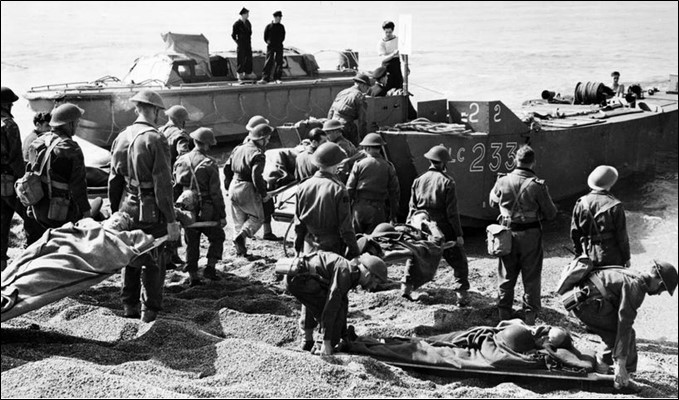
It was now 11.30am. Putting the cyanide pill in his pocket ready for use in case, Jack, with Roy Hawkins, decided after a long discussion with the officers and men in the cassino, to make a run for a Landing Craft lying several hundred yards off the shore. Smokey, one of the escort, at first threatened Jack with his knife if he tried to leave, but Jack convinced him that they, with Bud, Jim and Roy could form a group and make a run for the LC. At that moment a Navy smoke shell landed nearby and Jack knew this was the moment. The group, plus several others, on Jack's command, amid all the chaos and smoke and debris, vaulted through a rear window and were away, racing towards the sea wall and the shingle and jumping barbed wire as bullets whined all about them. Smokey and Bud disappeared. Jim was killed on the wire but Hawkins kept up with Jack, who was quietly reciting the Shema (a Jewish prayer) to himself as he ran. He now discarded his helmet and jacket, but this revealed his blue RAF shirt and made him a particular target. Within seconds they were in the sea, half crawling, half swimming. About fifty yards ahead they saw an LC in the smoke screen. In one last great effort, they swam, exhausted, to the half open ramp and grabbed the side; two sailors grabbed Jack and pulled him in. "Pick up my mate!" blurted Jack. "What do you think this is, the No. 8 bus?" quipped a cockney sailor, hauling Roy in too. The LC turned north and made for England.
At Pourville, firing slowly stopped, as the Canadians ran out of ammunition and a ceasefire was agreed. By 1pm it was all over. They were lined up outside the Hotel de la Terrasse and Col. Merritt, now wounded, watched with pride as his surviving men marched away, in disciplined ranks, to become POW's.
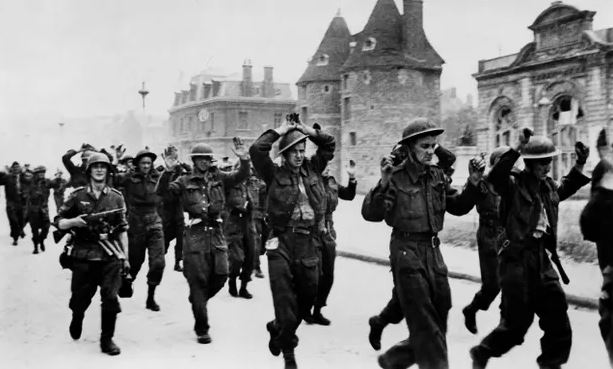
Holed by Luftwaffe strafing, the LC made for a nearby flak ship and transferred all the passengers, just as the LC itself finally gave up the ghost and sank. Like the sailors on the LC, the Royal Marine crew on the ship were Cockneys, and this cheered Jack enormously. One of them gave him an old RM jacket to keep warm. They made for home. Jack had survived and at 2am they reached Newhaven, where he and Hawkins found a warehouse and fell into a sleep of the dead. Next morning Jack and Roy parted company, without knowing they would not meet again for 25 years. Of the eleven men who had set out for the radar station on the hill at Pourville, only these two got back to England.
Jack was taken by two MP's to Canadian Army HQ in Reigate where he had some difficulty persuading the Intelligence de-briefers who he was, with his army trousers, RAF blouse and RM jacket! German prisoners had been brought back and it was possible some could have got into allied uniforms to pass themselves off as friends! Eventually he made his way to Waterloo, London, thence by tube to the Air Ministry and at last met again with Air Commodore Tait.
There he was told of the success of his work. Prof Reginald V Jones (who died in Dec 1997), a leading member of Air Intelligence and a radar expert, told Jack that because he had cut the wires as he did, the German radars as expected had communicated by radio and all the signals had been intercepted in England and analysed. As a result, it was now clear that there was no second standby radar system being used by the Germans across North West Europe and that they used several different call signs for the same fighter squadron, so deceiving the Allies into believing that they had far more air power than in fact existed; it was also clear how long it took them to calculate that an Allied air attack was incoming, for scrambling their aircraft - especially the night-fighters which did so much damage to Bomber Command - so giving them very early warning. In addition much was being learned about the technical capabilities of the German radar system itself which in turn meant that jamming devices could now be used to saturate the radars, undoing all the German deception work and so make all future air attacks against the Germans more efficient and so save Allied lives and eventually shorten the war. One result was that at the Normandy landings later, whilst the Allies could see everything with their radar, the German radar was completely jammed.
I'm getting tired of being part of a major historical event.
The Mighty Herc reaches 850,000 flying hours.
The Air Force has surpassed 850,000 flying hours with the C-130 Hercules transport aircraft. The milestone was achieved on the 21st January 2022 by a 37 Squadron crew flying a C-130J Hercules from Richmond to Amberley.
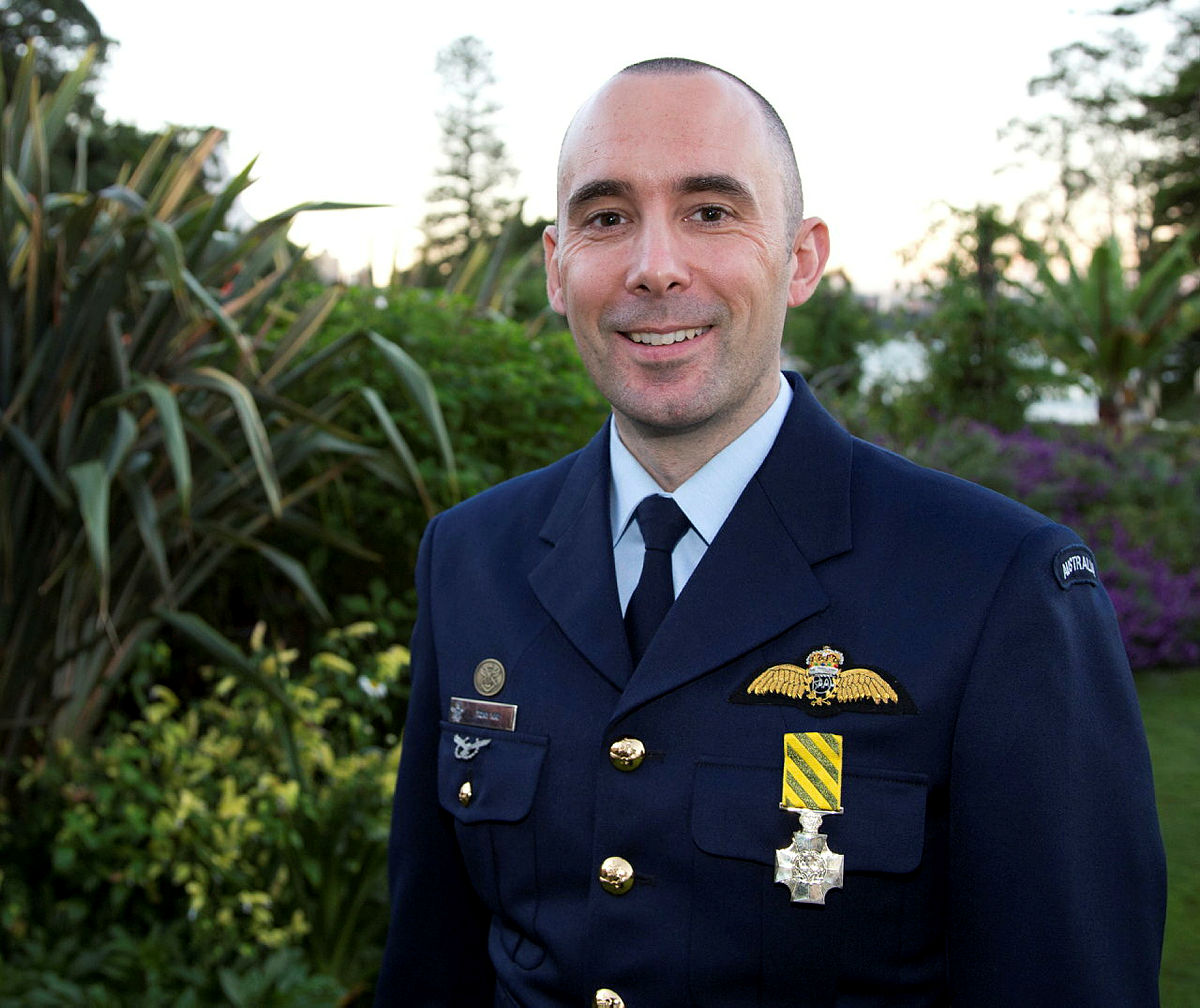
Since 1958, generations of RAAF aviators flying four different variants of the Hercules have provided airlift support to Defence. Commanding Officer No. 37 Squadron Wing Commander Anthony Kay (above) said the 850,000-hour milestone was passed during a mission for Operation Tonga Assist 22. “It comes as no surprise that this milestone should occur during a mission to provide important assistance to our Pacific family,” Wing Commander Kay said.
“Generations of our Hercules workforce have carried urgent relief supplies over long distances to remote airfields, often at short-notice, and for long periods away from their family.
“The impressive scope of what we’ve achieved within those 850,000 hours is a testament to the service of thousands of people who have crewed RAAF Hercules and kept them flying.” The aircraft that flew the 850,000th hour, serial A97-467, is one of 12 C-130J Hercules operated from Richmond since 1999. The current fleet was preceded by 12 C-130As from 1958 to 1978; 12 C-130Es from 1966 to 2000; and 12 C-130Hs from 1978 to 2012.
Throughout those 850,000 hours, the equivalent of more than 97 years airborne, RAAF aviators have flown Hercules missions to every continent, including Antarctica. “It’s probably not really possible to properly determine the distance our crews have travelled since 1958, or the amount of cargo they have carried in that time,” Wing Commander Kay said. “The number of passengers carried runs into the millions and includes Defence personnel on operations, civilian communities, heads of government, celebrities, and even animals requiring urgent air transport. A considerable number of Australians, whether they are Defence or civilian, have either flown on a RAAF Hercules, or been the recipient of aid delivered by one of our aircraft.”
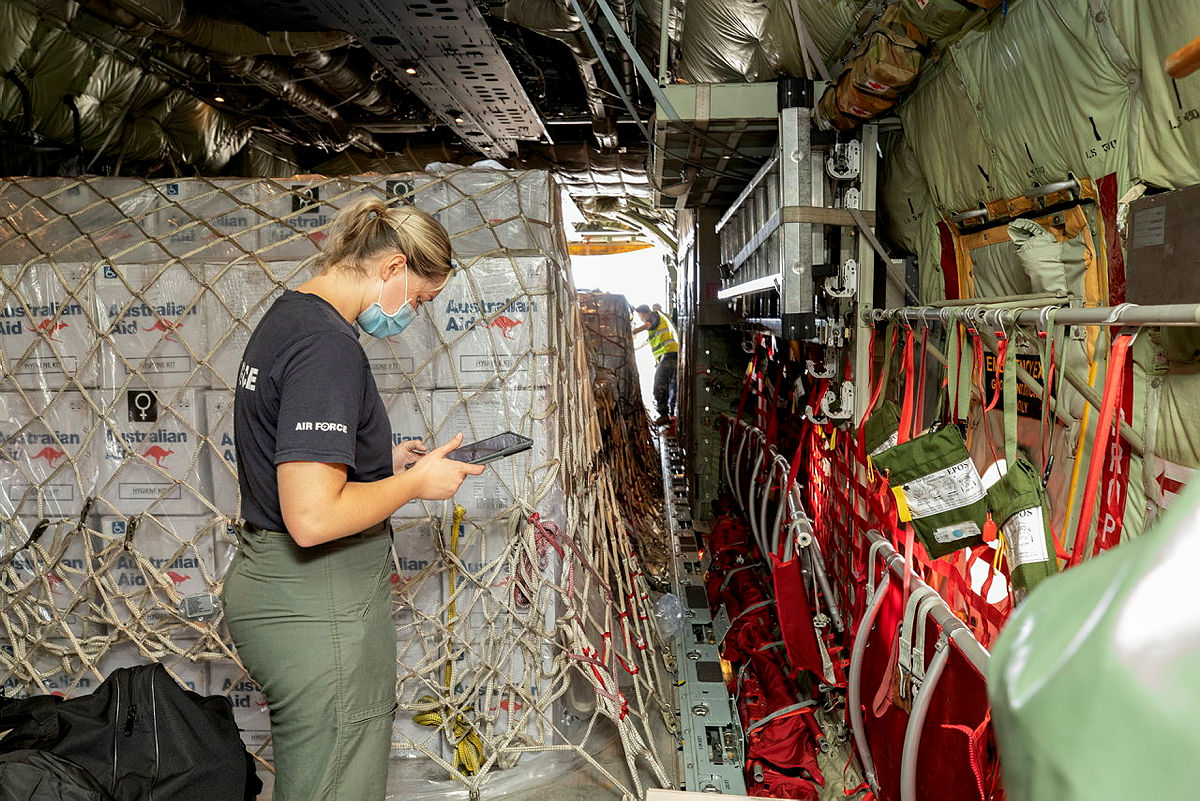
Loadmaster Corporal Siovahn Daley, of No. 37 Squadron, conducts pre-flight checks on humanitarian assistance and supplies onboard a C-130J Hercules at Amberley, bound for Operation Tonga Assist 2022.
The passenger experience of flying inside a Hercules has remained largely consistent since 1958, but in recent years the fleet has been upgraded to deliver greater connectivity. This improves the airlift support available to Defence and has modernised opportunities for those on board.
“Crew and passengers flying on future Hercules missions can conduct mission planning and remain globally connected throughout their flight, wherever they may be deployed,” Wing Commander Kay said. “These upgrades will inform not only how we operate the Hercules, but how we may also upgrade and develop other air mobility platforms into the future.”
Flying hours (as at 21st January, 2022)
| C-130A (1958 to 1978): | 148,063.6 hours | ||
| C-130E (1966 to 2000): | 307,007.9 hours | ||
| C-130H (1978 to 2012): | 244,618.4 hours | ||
| C-130J (1999 to Present): | 150,310.1 hours |
All without a major incident. An excellent achievement.
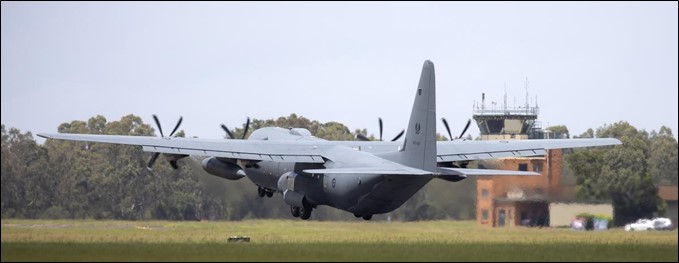
My goal for 2021 was to lose 10 kg. Only have 14 to go.
There are a lot of sensors in your phone, here’s what they do.
There’s a lot that goes into making smartphones work as well as they do. How does the screen automatically adjust brightness? How does the phone know to rotate the screen when you turn it? It’s all thanks to the dozens of sensors hidden inside. We’ll explain a few of the most important ones.
Ambient Light Sensor.
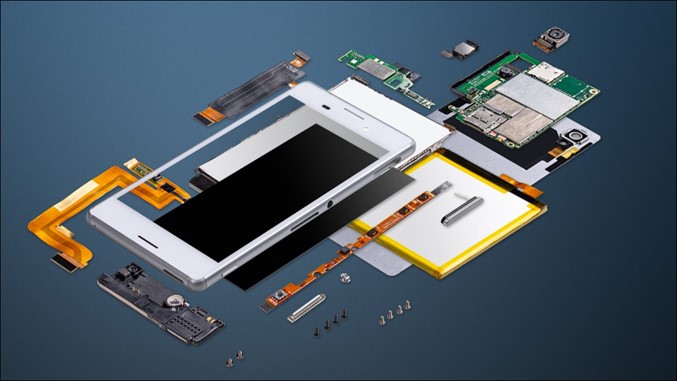
The Ambient Light Sensor is responsible for a common feature on iPhones and Android devices called “Auto Brightness.” This sensor makes it possible for your phone to detect the lighting conditions around you and adjust the screen brightness accordingly.
The sensor essentially takes in all the available light around you and uses that to calculate the ambient lighting conditions. That information is then sent to the display, which brightens or dims to match. It’s a simple concept, but extremely convenient. You hardly ever need to manually adjust the brightness.
Accelerometer
The Accelerometer is one of more well-known sensors in smartphones. Many people assume it’s responsible for knowing when to rotate the screen, but it’s actually just one piece of the puzzle. Alone, the accelerometer detects motion. It detects motion in three directions, side-to-side, up/down, and forward/backward. Essentially, whenever your phone moves, the accelerometer notices it. That’s how phones can be used as step counters. The accelerometer detects movement in relation to gravity. It’s really good at picking up any movement, but not great at knowing the precise position of your phone.
Fingerprint Scanner.
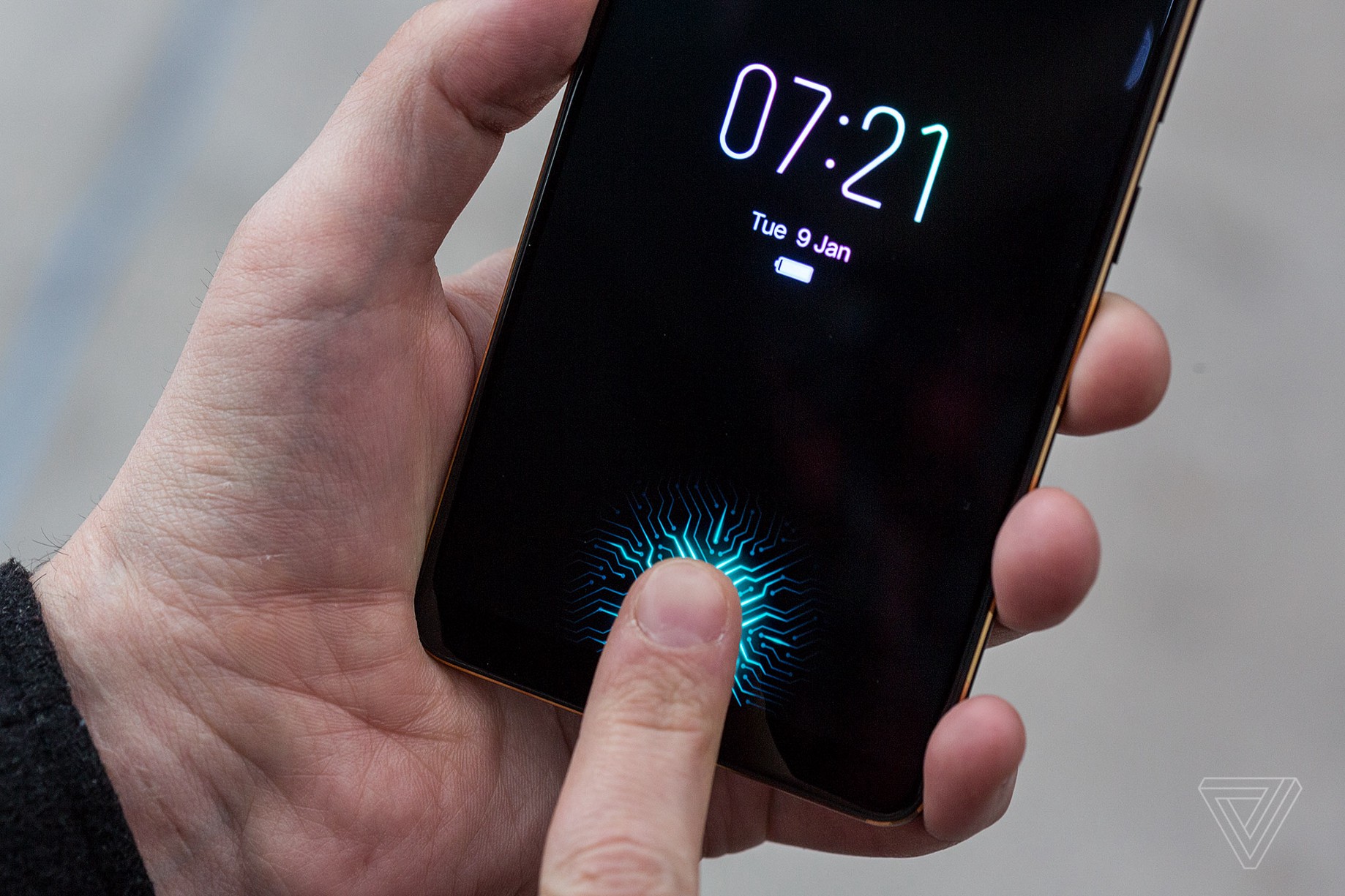
There are three main types of fingerprint scanners—optical, capacitive, and ultrasonic. An optical scanner is essentially a camera, it uses light to scan your finger. These are easily fooled. A capacitive scanner uses electronic capacitors to scan your finger. It’s the same technology found in “capacitive buttons,” which can detect touch without being pressed. These are better than optical, but not the best. For the most secure fingerprint scanner, you want an ultrasonic sensor. This type uses sound waves to detect all of the ridges in your finger. It’s pretty hard to fool these, though not impossible, which is why they’re mostly found on high-end smartphones. In-display or Under-display fingerprint scanners typically are optical or ultrasonic.
GPS
GPS (Global Positioning System) is probably the most well-known sensor in your phone. This sensor is responsible for knowing your precise location. It’s used by mapping applications and many others. The GPS unit inside your phone receives pings from satellites. It uses information from multiple satellites to triangulate your exact position. That’s why the GPS signal can be weak indoors sometimes. All of this happens without using data, by the way. Nowadays, smartphones use GPS information along with cell tower signal strength and wireless networks for even more accurate location details.
Gyroscope
The accelerometer needs help to know when you rotate your phone, it uses the gyroscope to do this. The gyroscope measures how much your phone has been rotated and in which direction, however, the gyroscope needs help too. Every rotation is compared to the previous time you rotated your phone and your phone is always being slightly rotated. This causes “drift” over time, making the information inaccurate. The accelerometer corrects this drift issue and also provides information about the device’s motion. Together, they can measure the true acceleration, but there’s one more piece to the puzzle missing.
Infrared Sensor
If your phone doesn’t have a fingerprint sensor, there’s a good chance it has an infrared sensor for facial recognition. This is what the iPhone uses for Face ID.
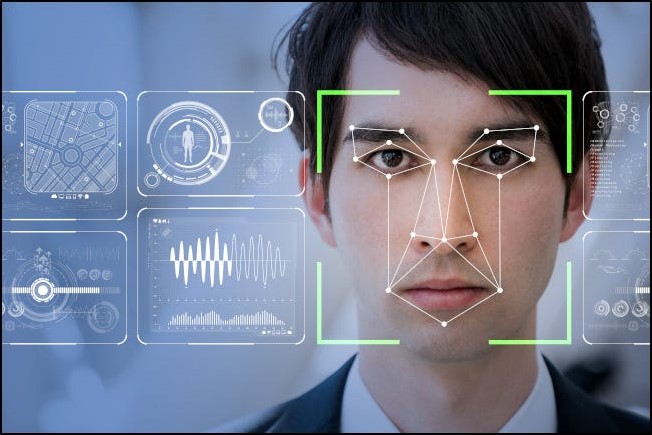
An infrared sensor uses infrared light to map your face in three dimensions with a series of dots. The infrared light is super important because it allows it to work in any lighting condition, unlike a regular camera. Every time you try to unlock your phone, the sensor scans your face and compares it to the images it knows are you. If it matches, the sensor tells the phone to unlock.
LiDAR
LiDAR is a sensor found in modern iPhones and iPads. Its purpose is to determine the distance between itself and other objects. It does this by measuring how long it takes pulses of light to bounce back. It’s like radar, but with light instead of radio waves.
The benefit of LiDAR over radar is it works better in small scale environments, like your home. The data collected by the LiDAR sensor is used to create 3D models and improve augmented reality. You can do a lot of things with LiDAR on your iPhone or iPad, such as create 3D scans of people, places or things. Photographs and videos still have their place, but why not augment your memory bank with something you can experience in three dimensions instead? See HERE.
Magnetometer
The last puzzle piece for your phone to know when you rotate it is the Magnetometer. This sensor is essentially a compass, it tells you which direction is north. If you’ve ever used a compass app, it used this sensor. The magnetometer detects which direction the device is moving in relation to the ground. Combine that with the information from the accelerometer and gyroscope and you get the complete picture of which orientation the device is in. All three work together and correct each other.
Proximity Sensor
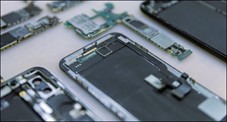
A proximity sensor does exactly what you would expect, it measures proximity. Similar to LiDAR, it emits a beam of light (that you can’t see) and then measures how long it takes to bounce back. The proximity sensor is most commonly used to know when to turn off your screen. It’s what turns off the screen when you hold your phone to your face for a phone call or put it in your pocket with the screen still on.
Even More Sensors
These are just a handful of the most common sensors you’ll find in smartphones. There are plenty of other sensors doing important things, too. As you can see, many of them work along with other sensors to do complex things. That phone in your pocket is an intricate web of processes and calculations. They truly are smartphones.
I don't mean to brag, but I finished my 14-day diet food supply in 3 hours and 20 minutes.
How does GPS actually work?
We already live in the future. We have handheld devices that use satellites to pinpoint our precise locations almost anywhere on the planet. But! - have you ever wondered just how GPS works?
GPS devices don’t actually contact satellites and transmit information to them. They only receive data from satellites, data that’s being always-transmitted, however, GPS isn’t the only way devices can determine your location.

From satellites to the palm of your hand.
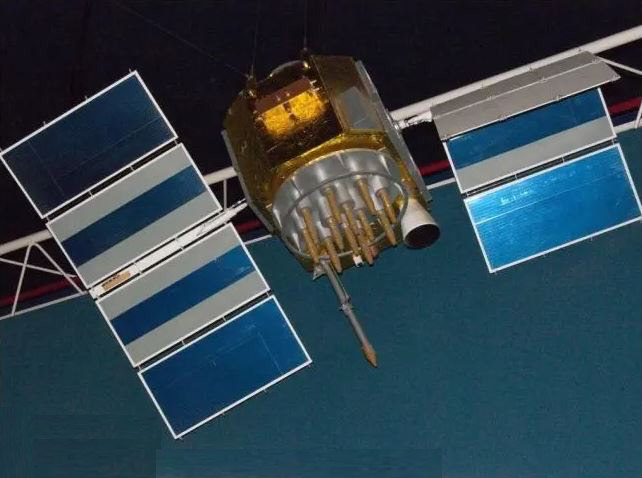
The global positioning system was originally created by the United States for military use, but was eventually opened up to civilian use. At least 24 GPS satellites are always in orbit around the Earth, and they’re constantly broadcasting data. The satellites are arranged in orbit such that four satellites are visible in the sky from any point on Earth. (You can’t actually see them, but there’s a direct path for the radio transmissions.) This means that GPS won’t work if the signals are being blocked, you will want a fairly direct path between you and the sky. In an underground bunker or in a cave under a mountain, it won’t work.
GPS satellites are constantly transmitting radio signals towards the Earth. Each transmission includes the location of the GPS satellite and the time the signal was sent. Each satellite has an atomic clock onboard, so the time is very precise.
So how GPS determines your location?
A device with built-in GPS, whether it’s a dedicated in-car GPS navigation unit or a smartphone, only acts as a GPS receiver. A device with GPS isn’t actually “contacting” satellites to determine its location. Instead, it’s just listening for the radio signals that are being broadcast from these satellites all the time. It “listens” for signals from four or more satellites. Signals from the closer satellites will arrive sooner, while signals from the farther satellites will arrive later. (The actual time difference is very small, but can be detected by the GPS receiver.)
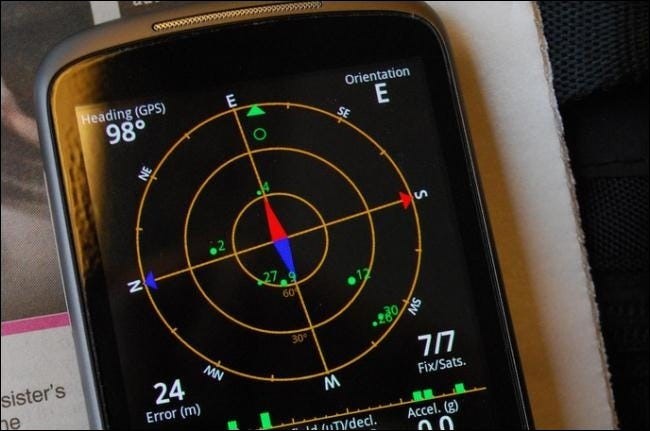
By comparing the time the signal was broadcast and the time the signal arrived, the receiver can estimate its relative distance from all four satellites. Using trilateration, the receiver can then determine its location. Trilateration may sound a bit complicated, but it’s actually fairly simple. Imagine if someone told you you were 500 miles from New York, 800 miles from Miami, and 700 miles from Kansas City. With this information, you could determine a region that is the correct distance from all of these cities and estimate your current location. If we told you your distance from a fourth city, you could estimate your location even more precisely. That’s trilateration in a nutshell, and it’s what GPS receivers are doing whenever you use them.
It all sounds simple when you say it fast but those of us who were brought up on valves it’s fairy tale stuff, we can understand the theory behind it all – but how do you get a circuit to be stable enough to do all that? - tb.
Alternatives to GPS
GPS isn’t the only way devices can estimate your current location. In the US the 911 service uses cell tower strength information to triangulate the position of mobile phones. This works in a similar way, by measuring the signal strength differences between multiple cell towers, your device can estimate your current location.
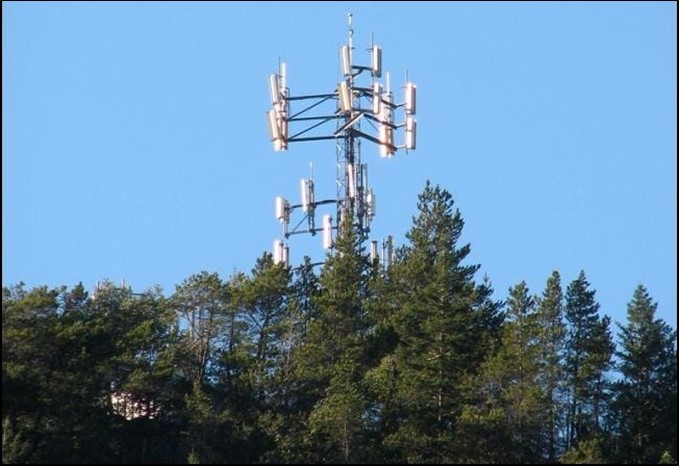
Some devices can also use a Wi-Fi based positioning system (WPS) to determine their current location. Google’s street view trucks drive around, capturing the names of nearby access points and their relative strengths at certain locations. Your smartphone scans for nearby wireless networks, then sends a list of their names and signal strengths to Google’s servers. Google uses their database and estimates where you are. (Google isn’t the only provider of Wi-Fi-based positioning system data, but it’s the one most people will be familiar with.) This can be particularly convenient in indoor locations GPS signals can’t reach.
The GPS system isn’t the only network of satellites that can be used for positioning, either. Russia has its own GLONASS system and China has BDS. Europe is also working on its own alternative to GPS, known as Galileo. GPS could be shut down or restricted in times of war or conflict, so nations want their own satellites to be self-sufficient.
I may not be that funny or athletic or good looking or smart or talented……
I forgot where I was going with this.
Velly Intelesting - but stoopid!!
Back Go to page: 1 2 3 4 5 6 7 8 9 10 11 12 13 14 15 16 17 18 19 20 Forward